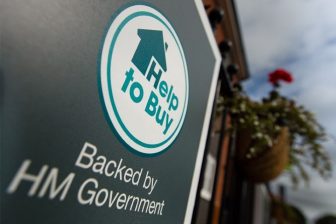 The government has published its final set of statistics related to the Help to Buy equity loan scheme.
The government has published its final set of statistics related to the Help to Buy equity loan scheme.
According to the data, between 1 April and 31 May 2023, 106 properties were bought with an equity loan, down 99% from the same period in 2022.
In the scheme’s entire period between 1 April 2013 and 31 May 2023, 387,195 properties were purchased with an equity loan, of which 328,346 were bought by first-time buyers. The total value of these equity loans amounts to £24.7bn, and the combined value of the properties sold under the scheme totals £109.2bn.
Help to Buy equity loans were introduced on 1 April 2013, with the scheme running until 31 May 2023 as a means for helping buyers purchase new-build properties. The government would provide, via an equity loan, up to 20% of the value of a property (up to 40% in London from 1 February 2016), repayable when the property would be sold in the future.
In 2020, it was announced that the Help to Buy scheme would change on 1 April 2021, with new eligibility criteria and regional price caps. The previous scheme deadlines initially required properties to be built out by the end of December 2020 and completed by the end of March 2021. However, due to delays caused by the Covid-19 pandemic, an extension was granted until 28 February 2021 for properties to be built out and until 31 May 2021 for legal sale completion.
According to Karen Noye, mortgage expert at Quilter, the scheme enabled a “significant number” of purchases by first-time buyers but its impact was not “uniformly positive”.
She said: “Its design, which allowed the government to gain a share of the property’s appreciation, meant that as house prices increased, so did the government’s profit from these loans. This aspect became particularly burdensome for homeowners when they reached the end of their five-year interest-free loan period.
“With the interest rate initially set at 1.75% and then increasing annually based on inflation, many homeowners faced escalating costs, adding financial strain to what was initially an assistance programme.”
Furthermore, Noye added, the scheme also had “significant implications” for house builders.
“By increasing demand for new-build homes, the scheme effectively lined the pockets of these developers,” she said. “As more buyers were able to access funds to purchase new homes, builders saw an increase in demand, which likely contributed to the rise in house prices.
“This increase in demand, fuelled by government-backed loans, provided a substantial financial boon to the construction industry. However, this benefit to builders came with the caveat that it may have contributed to inflating house prices, making the market less accessible in the long run.”


I said all along, the original version of help to buy was much better, as that applied to ALL properties, not just new builds. I used the original version back in when we bought our first property, and we sold it in 2015. We repaid the money we had ‘borrowed’ as a deposit, I believe about £23k and still had enough left as equity to use as a 10% deposit on our next home.
Doing it for any property enables second time buyers to move up the ladder and keeps the market moving. Doing it for New Build only just lines the pockets of the big builders.
You must be logged in to like or dislike this comments.
Click to login
Don't have an account? Click here to register